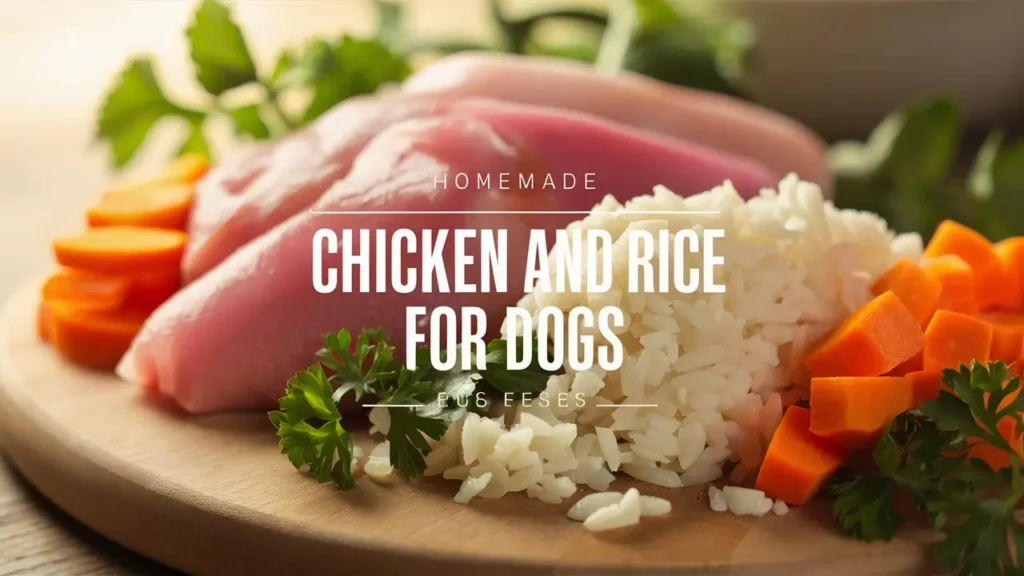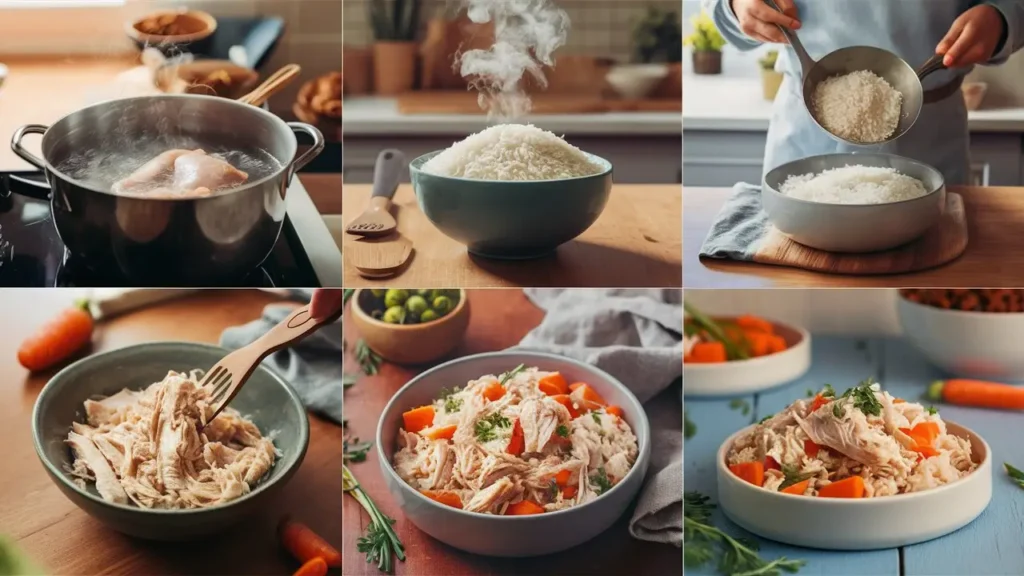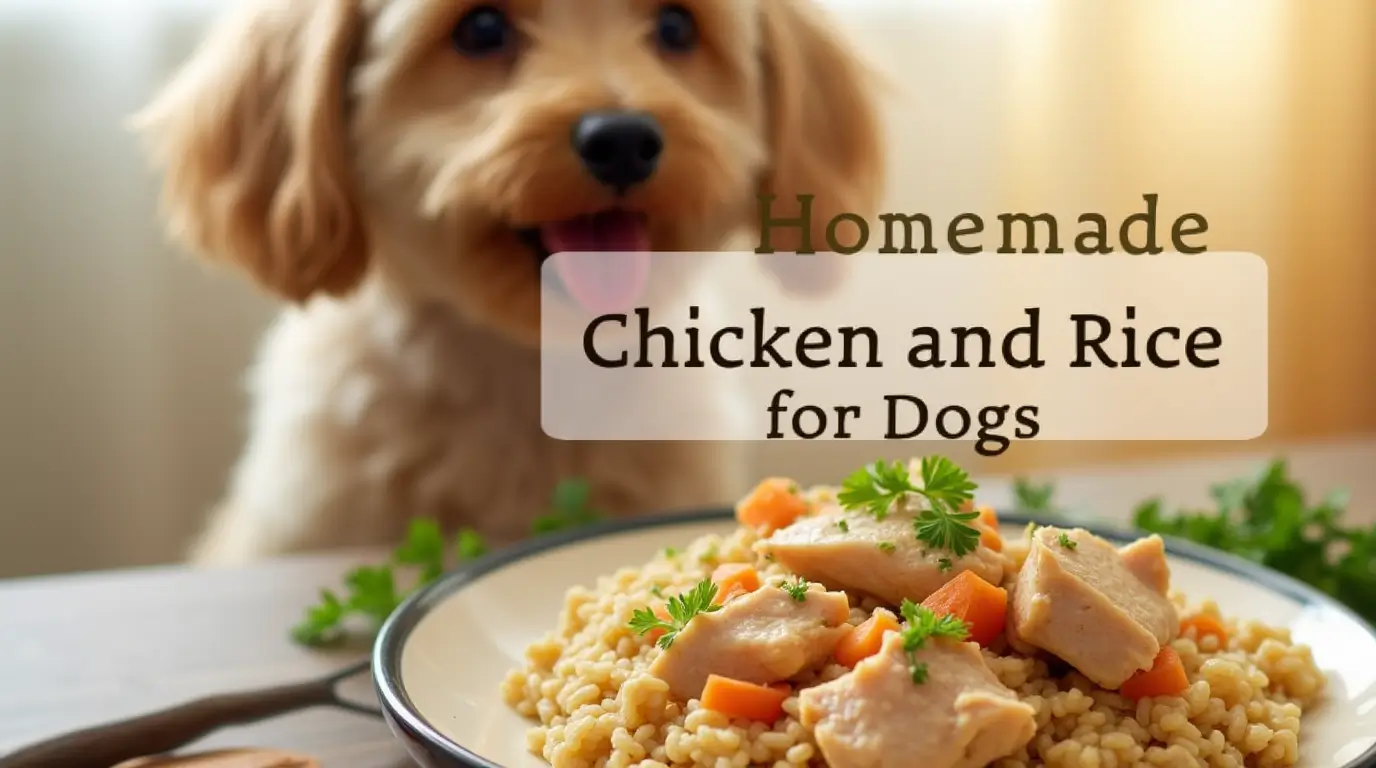Introduction
As a pet parent, you want to give your dog the best nutrition possible. While commercial dog food is convenient, a homemade meal like chicken and rice for dogs can offer more benefits. This simple, vet-approved recipe is often recommended for pups with sensitive stomachs or those needing a nutritious, wholesome meal.
In this guide, you’ll discover why chicken and rice for dogs is a great choice, how to prepare it, the right serving sizes, and answers to common questions. Let’s explore the details of this healthy homemade meal!
Table of Contents
1. Why Chicken and Rice is a Healthy Meal for Dogs
1.1 Nutritional Benefits
Chicken and rice offer a well-balanced meal with essential nutrients that support your dog’s overall health:
- Protein-Rich: Chicken provides high-quality protein for muscle growth and repair.
- Easily Digestible Carbohydrates: White rice is gentle on the stomach and provides quick energy.
- Low in Fat: This meal is naturally low in fat, making it ideal for dogs with sensitive stomachs or weight concerns.
1.2 Ideal for Sensitive Stomachs
Veterinarians often recommend chicken and rice as part of a bland diet when dogs have digestive issues such as:
- Diarrhea or vomiting
- Food sensitivities or allergies
- Recovering from illness or surgery
The simple ingredients make digestion easier and allow your dog’s stomach to settle.
1.3 Vet-Approved for Recovery
Many vets prescribe a chicken and rice diet as a short-term solution to help dogs regain strength. The high protein content helps with tissue repair, while the carbohydrates provide the necessary energy for recovery.
2. Choosing the Right Ingredients for Your Dog’s Meal

2.1 Best Chicken Options
When preparing chicken for your dog, always use boneless, skinless chicken to avoid potential hazards:
- Chicken Breast: Lean and easy to digest.
- Chicken Thighs: Slightly higher in fat but still a good option.
- Ground Chicken: Easier for small dogs to chew.
Avoid: Chicken bones, skin, and fatty parts, as they can cause digestive upset or choking hazards.
2.2 White Rice vs. Brown Rice
Both white and brown rice are safe for dogs, but they serve different purposes:
- White Rice: Easier to digest and best for dogs with upset stomachs.
- Brown Rice: Higher in fiber and nutrients, better for long-term feeding.
2.3 Optional Additions for Extra Nutrition
You can enhance the meal with vet-approved ingredients:
- Carrots & Peas: Provide vitamins and fiber.
- Pumpkin: Helps with digestion.
- Bone Broth: Adds flavor and extra nutrients.
3. How to Cook Chicken and Rice for Dogs: Step-by-Step Guide

3.1 Cooking the Chicken Properly
- Boil 2 boneless, skinless chicken breasts in a pot of water.
- Cook for 12-15 minutes until fully white inside.
- Let it cool and then shred into small pieces.
Avoid: Adding salt, seasoning, or oil.
3.2 Preparing the Rice
- Rinse 1 cup of white rice to remove excess starch.
- Boil 2 cups of water and add the rice.
- Cook on low heat for 15-20 minutes until soft.
- Let it cool before mixing with the chicken.
3.3 Mixing and Serving
- Combine the shredded chicken with cooked rice in a 2:1 ratio (two parts rice, one part chicken).
- Allow the meal to cool before serving.
4. Feeding Guide: How Much Chicken and Rice to Serve
4.1 Serving Sizes Based on Dog Size
Portion sizes depend on your dog’s size and activity level:

- Small Dogs (under 20 lbs): ½ to 1 cup per meal.
- Medium Dogs (20-50 lbs): 1 to 2 cups per meal.
- Large Dogs (50+ lbs): 2 to 3 cups per meal.
4.2 How Often Should You Feed It?
- Short-term use: Feed twice a day for 2-3 days to help with an upset stomach.
- Long-term feeding: Ensure variety with other nutrient-rich foods.
4.3 Signs Your Dog is Enjoying the Meal
Watch for positive signs such as:
- Increased energy levels
- Healthy digestion (no diarrhea or bloating)
- Shiny coat and overall well-being
5. Common Questions About Chicken and Rice for Dogs
5.1 Can Dogs Eat Chicken and Rice Every Day?
Yes, but it should not be the only food in their diet. Over time, this meal lacks essential vitamins and minerals.
5.2 How Long Can You Store Homemade Dog Food?
- Refrigerator: Store in an airtight container for 3-4 days.
- Freezer: Freeze portions for up to a month.
5.3 Are There Any Risks of Feeding Chicken and Rice?
- Nutritional Deficiencies: Missing key nutrients like omega-3s and essential vitamins.
- Allergies: Some dogs may have sensitivities to chicken.
- Weight Gain: Feeding too much can lead to obesity.
Conclusion
Chicken and rice is a simple, nutritious meal that can be a great option for your dog, especially during recovery or as an occasional homemade treat. By using high-quality ingredients and serving proper portions, you ensure that your furry friend enjoys a meal that supports their health.
If you found this guide helpful, explore more dog nutrition tips at Joyful Paws Dogs and start making healthier meals for your pup today!

